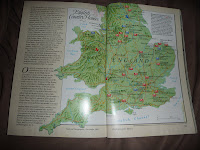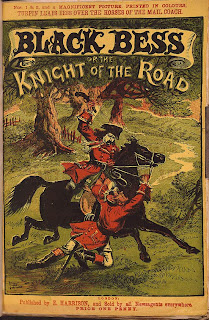 Today we welcome debut author Emery Lee. Emery’s The Highest Stakes is set earlier than the Regency, in the 18th century racing world. I first “met” Emery when she sent a frantic email asking for advice. An editor had made an offer for the very first book she wrote. I’m not sure if my advice is responsible, but that book is here!
Today we welcome debut author Emery Lee. Emery’s The Highest Stakes is set earlier than the Regency, in the 18th century racing world. I first “met” Emery when she sent a frantic email asking for advice. An editor had made an offer for the very first book she wrote. I’m not sure if my advice is responsible, but that book is here!
Read what some reviewers say:

The Highest Stakes is a rich and rewarding read, with the history of
the times neatly sewn in. The real meat of the book, though, is its
relationships: not only between Charlotte and Robert, but between
Robert and Phillip Drake, and a handful of lesser players. Emery Lee
lays it out cleverly, sometimes humorously, with period sensibility
and restrained sensuality–A Historical Novel Review
Emery will give away a signed copy of The Highest Stakes to one lucky, randomly-chosen commenter.
Welcome to the Riskies, Emery! The Highest Stakes is your debut novel! Tell us about it.
The Highest Stakes is a tale of drama, danger, thwarted love, and retribution set in the high stakes gentleman’s world of 18th century horseracing, when racing and breeding were the obsession of the uppermost elite, and a match race might replace a duel in settling a point of honor.
Charlotte Wallace leads a cold and lonely existence a sympathetic stable groom takes her under his wing and teaches her everything about horses and horseracing. Robert Devington’s singular desire is to claim the girl he has loved since he first spied her riding hell-for-leather over the Doncaster heath, but these star-crossed lovers are destined to be thwarted at every turn. Determined to have Charlotte at any cost, Robert risks everything in a wager …for love.
Throughout this story the history of the English Thoroughbred is also told, from its creation by mares imported as part of a queen’s dowry, to the breed’s perfection through the progeny of the Byerley Turk, the Darley Arabian, and the Godolphin Barb. From Doncaster’s Cantley Common to Newmarket’s Rowley Mile, and across the Atlantic to the American Colonies, the English blood horse emerges from the stables of the powerful elite to dominate the turf.
We love debut authors! Tell us about “The Call” when you found out someone wanted to publish your book.
Shockingly, The Highest Stakes is the first and only novel I have ever written, and it was begun at the tender age of forty-three! I wrote the novel during an extremely turbulent year that included the accidental deaths of four beloved animals, my father succumbing to lung cancer, and the loss of my job. Although the details are now hazy, I may have been in the process of sticking my head in the gas oven when “the call” came!
Seriously, “the call” came at a very pivotal moment in my life. I had finished The Highest Stakes with the intention of entering a major writing contest. I mailed off my manuscript with a kiss and a prayer that somehow my masterwork might fall into an admiring editor’s hands. Being a somewhat obsessive/compulsive woman of action, however, I couldn’t just sit and wait. I began firing off query letters to literary agents left and right, with rejections following on every last one of them. I then discovered two publishers who still accept unagented queries and decided to give it a go.
Deb Werksman at Sourcebooks replied with a request for the full manuscript, and called a couple of weeks later with an offer. I was thrilled…dumbstruck… and mostly terrified. I knew absolutely nothing about publishing, and needed someone experienced to guide me. I frantically emailed a group of author bloggers asking for help. One kind soul referred me to my present agent Kelly Mortimer of Mortimer Literary. The rest, as they say, is history.
What inspired you to write about horseracing and horses?
I have loved horses for as long as I can remember, and like most young girls, always dreamed of
owning my own. This dream came true at age thirteen, when I managed to save five hundred dollars and secure a steady baby-sitting job that paid just enough to cover the cost of board.
Since then, I have owned about thirteen different horses of various breeds. I have shown, trained my own mounts, and taught all of my family members to ride. These days my schedule only allows for pleasure riding, and I own two geldings, a gorgeous grey Arabian, and a palomino Quarter horse.
I have always heard that one should write what one knows. I also believe one should write about one’s passion. I know horses and they are one of my passions.
Did you come across anything in your research that surprised you?
Absolutely! I am such a geek that I have spent a great deal of my life researching things just for the fun of it – simply because something piqued my interest.
I admire horses, and have owned several different breeds. I am, however, most partial to the Arabian for his gentleness, beauty, and perhaps in part, to his ancient lineage. A long time ago, I learned that the thoroughbred racehorse actually descended from the Arabian. I was curious to learn more and began digging.
It was fascinating to learn that the Thoroughbred was created specifically for racing in 18th century England. Another little-known fact is that nearly all of the Thoroughbreds in existence can still trace their blood lines back to three specific Eastern bred stallions. This is how the premise of the novel came about.
Here at Risky Regencies we’re all about risky. What is risky about The Highest Stakes?
Although The Highest Stakes is unquestionably a love story, it is not at all in the traditional mode.
Although I am an unapologetic romantic who devours historical romance novels by the bucket load, I just knew that traditional romance was not my writing style. I have always been most drawn to stories with a darker side, heavily empathizing with the “tortured” characters in some my favorite novels – Rebecca, Jane Eyre, and Wuthering Heights. I also believe these kinds of characters work best with a foil. In my world, Robert Devington could not exist without Philip Drake.
My other “risks” were to attempt what I felt was a grand-scale love story with not one, but several antagonists, whose Machiavellian moves against Robert and Charlotte would tug on the readers’ heartstrings. Lastly, I wanted to tap into the excitement and adventure of horseracing.
Although these elements are seemingly at odds, I hope my readers will find it a winning combination.
What’s next for you?
Professionally speaking –
Although The Highest Stakes is already a big read, I can’t help feeling the story is still only half told! I am very pleased to say that Sourcebooks recently concurred with me, and the second novel is well under way. Fortune’s Son (Philip Drake’s story), should be released late 2011.
On a more personal note –
I am celebrating the publication of my first novel by realizing a lifelong ambition – to attend The Kentucky Derby. I’ll see y’all soon at Churchill Downs!
Are you ready for a good horse story? Did you devour horse books as a child? Ask Emery questions or make a comment for a chance to win a signed copy of The Highest Stakes.

 The idea of visiting such a house as a relation boggled my mind! Perhaps Girouard’s love of English architecture began with such visits. He later read the old account books, letters, and other documents from Hardwick Hall, piecing together what happened there.
The idea of visiting such a house as a relation boggled my mind! Perhaps Girouard’s love of English architecture began with such visits. He later read the old account books, letters, and other documents from Hardwick Hall, piecing together what happened there.  In addition to Hardwicke Hall, the article includes photos (by Fred J. Moon) of several other Houses, such as Blenheim, Penshurst Place, Knoll, Burghley House, and Castle Howard, mentioning that Castle Howard was the location for the recent (in 1985) TV miniseries, Brideshead Revisited
In addition to Hardwicke Hall, the article includes photos (by Fred J. Moon) of several other Houses, such as Blenheim, Penshurst Place, Knoll, Burghley House, and Castle Howard, mentioning that Castle Howard was the location for the recent (in 1985) TV miniseries, Brideshead Revisited













